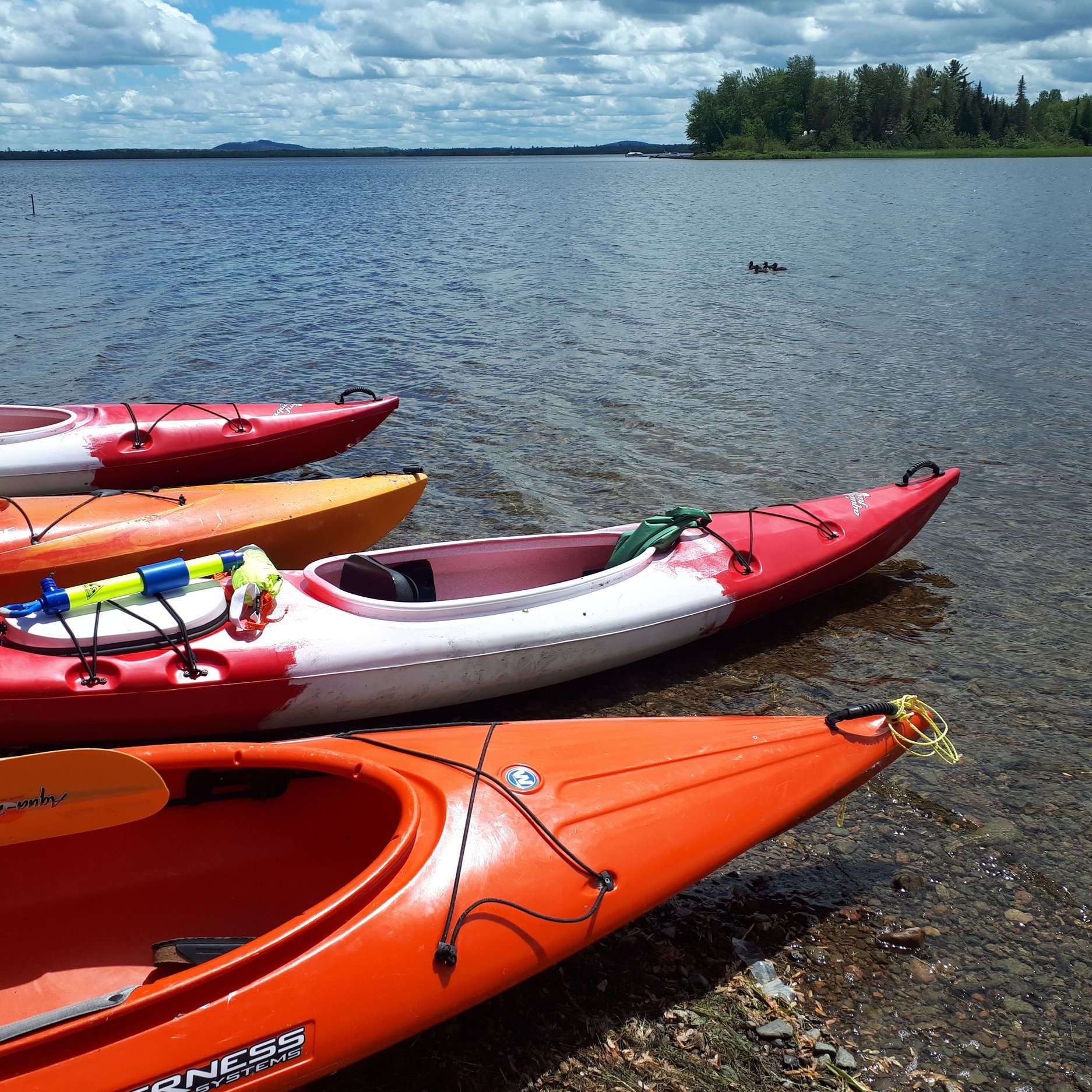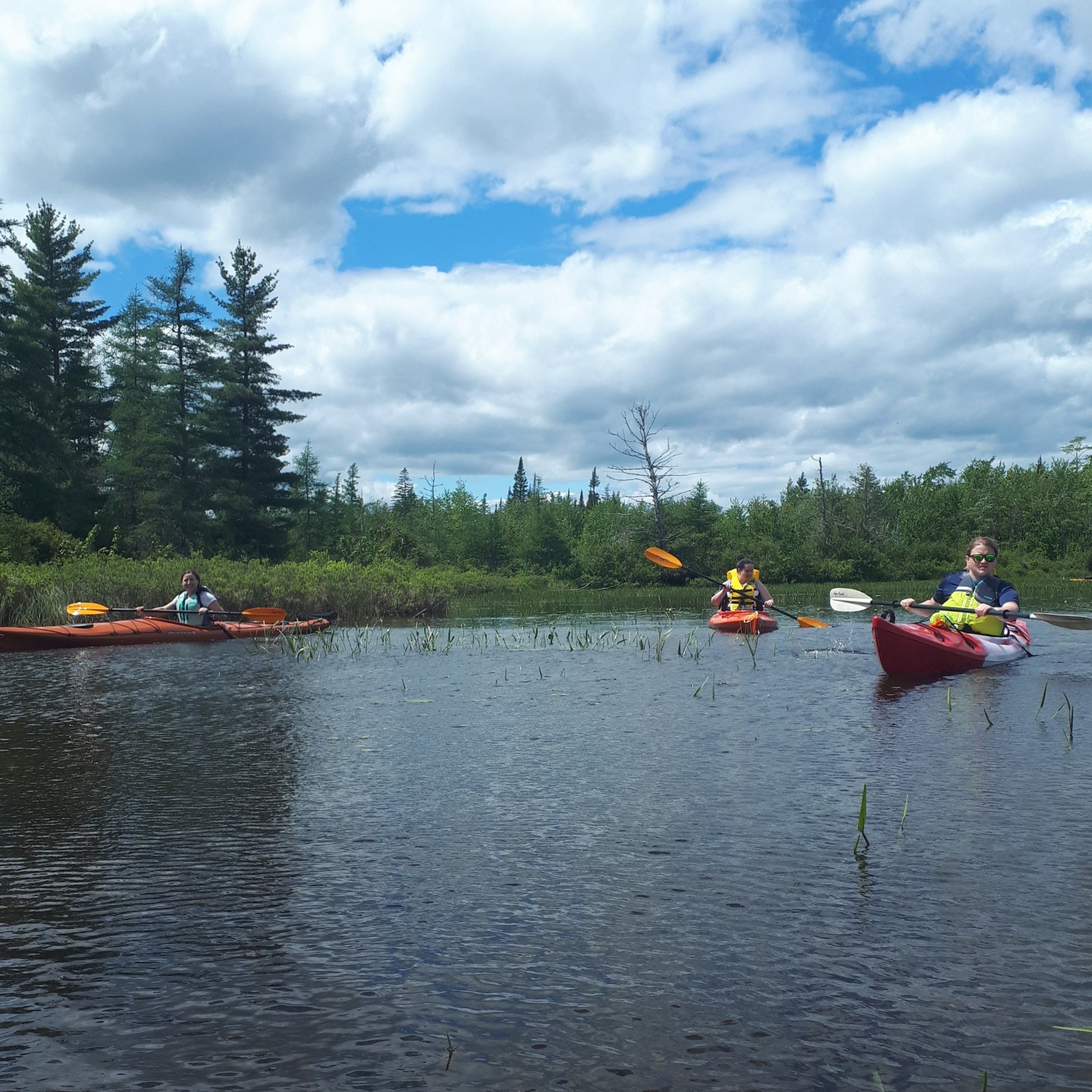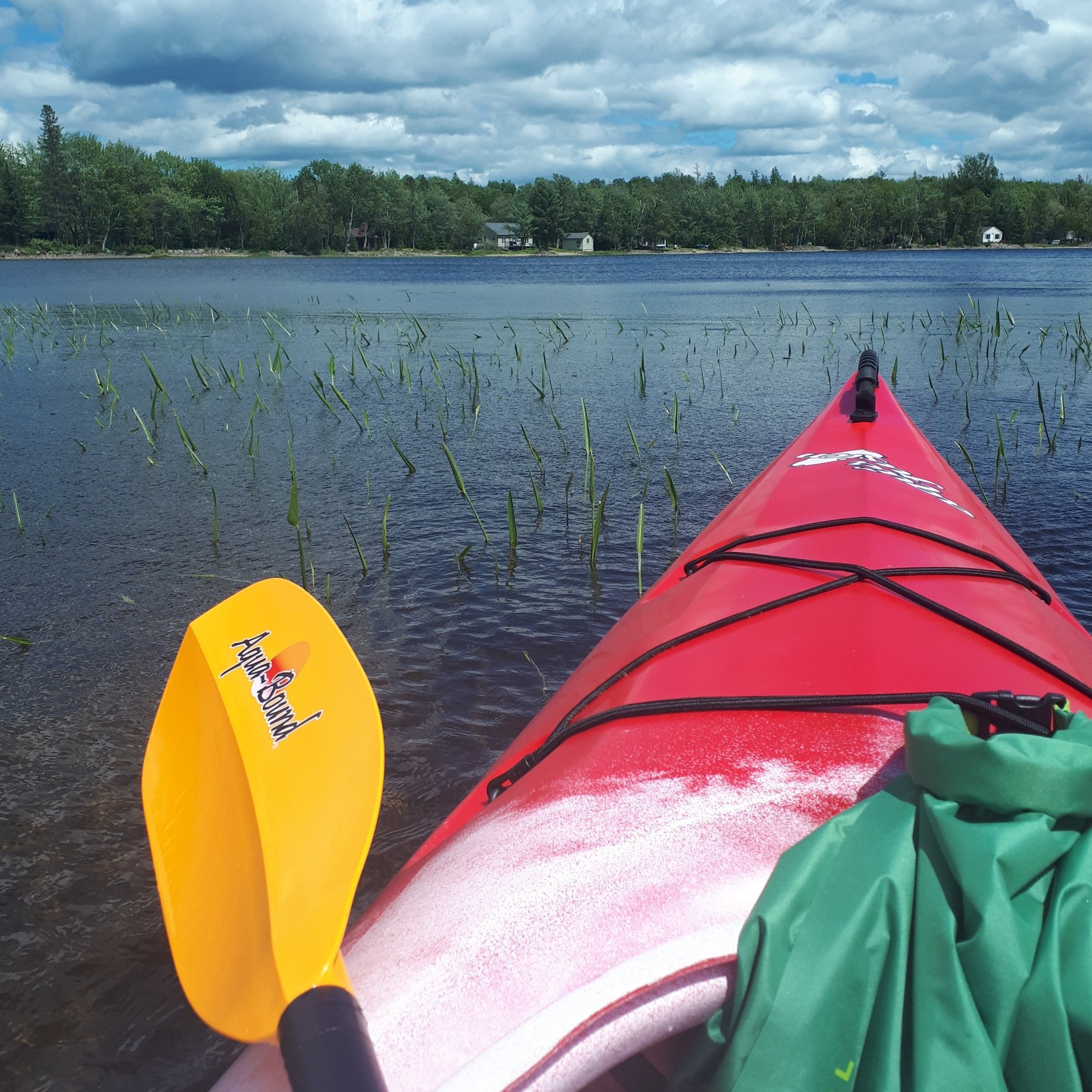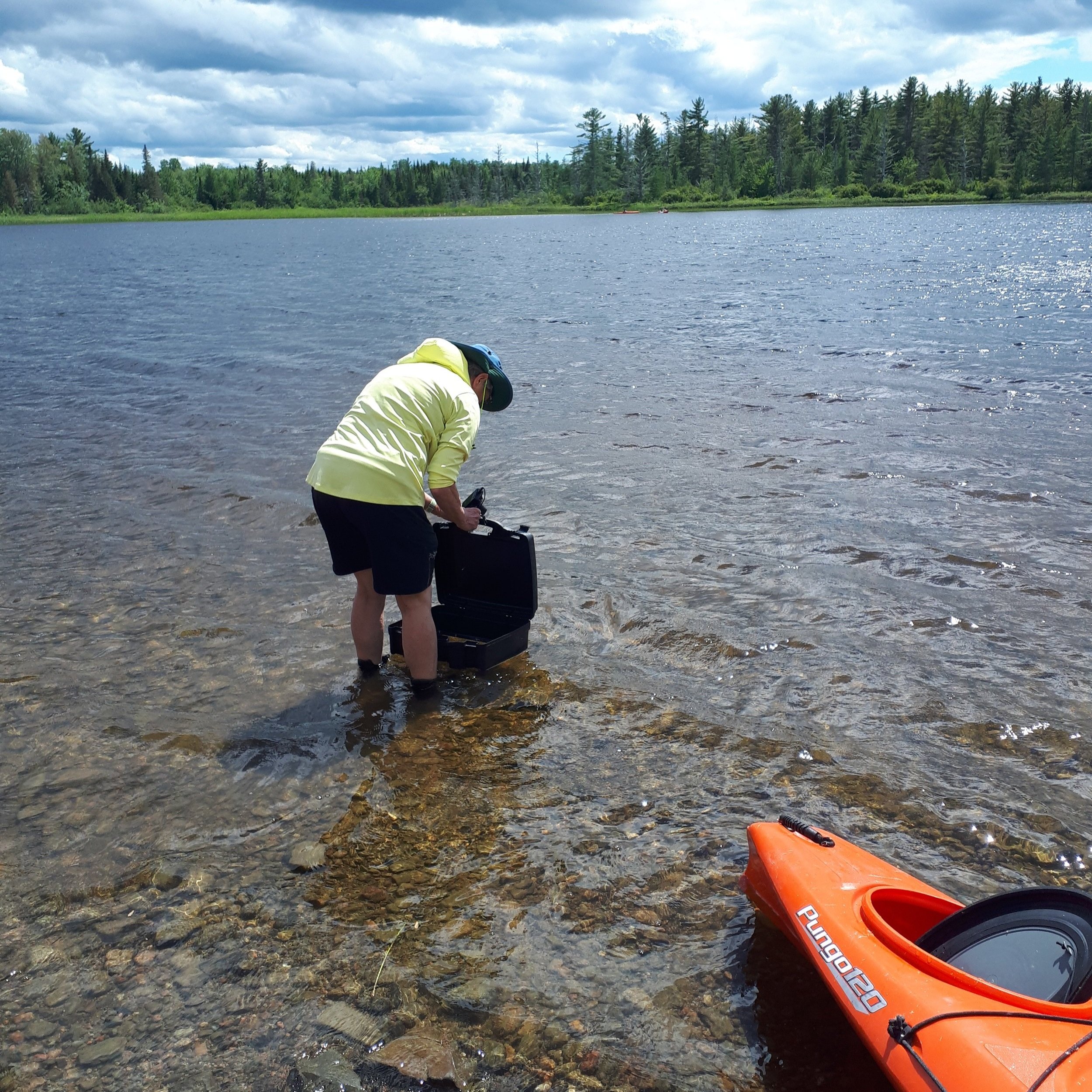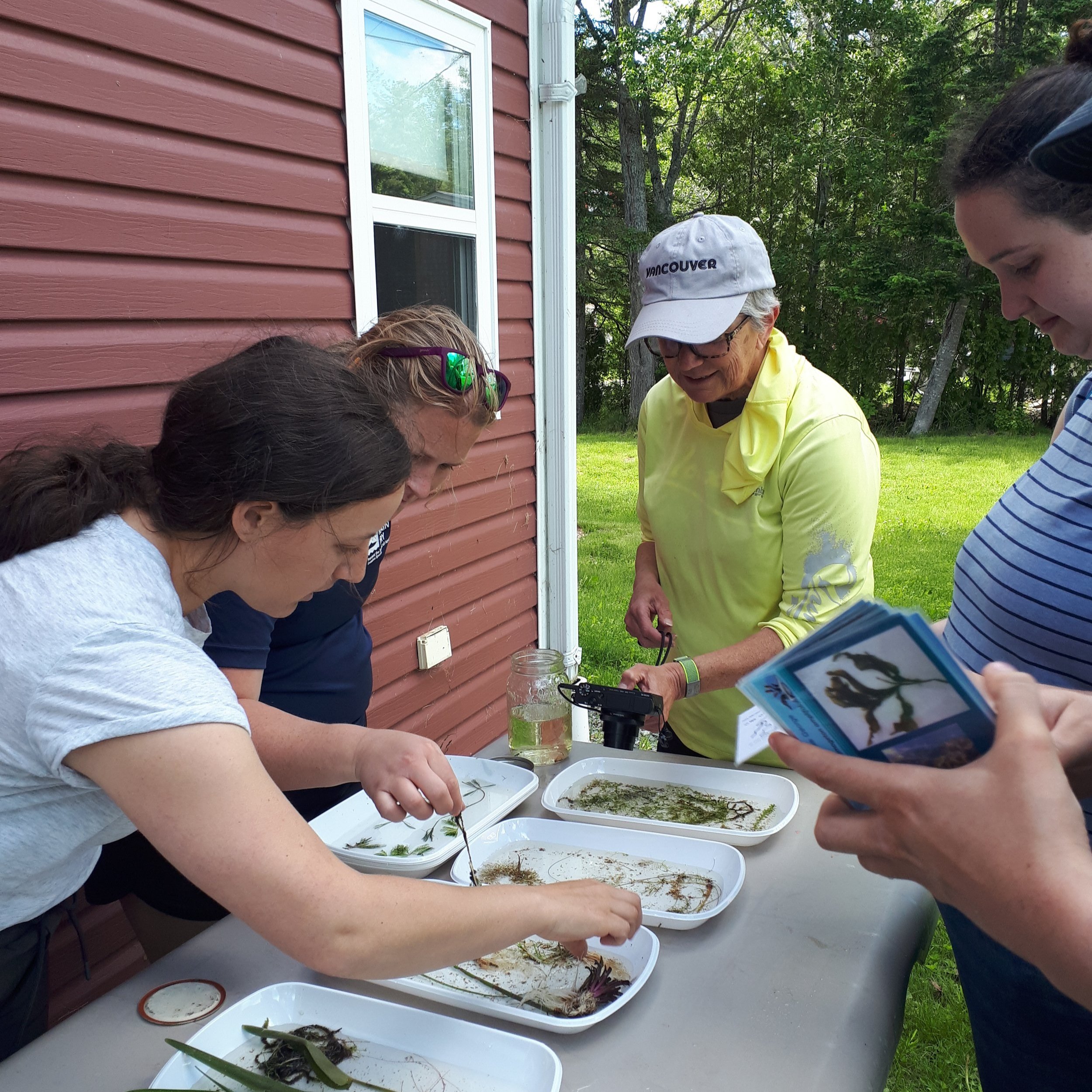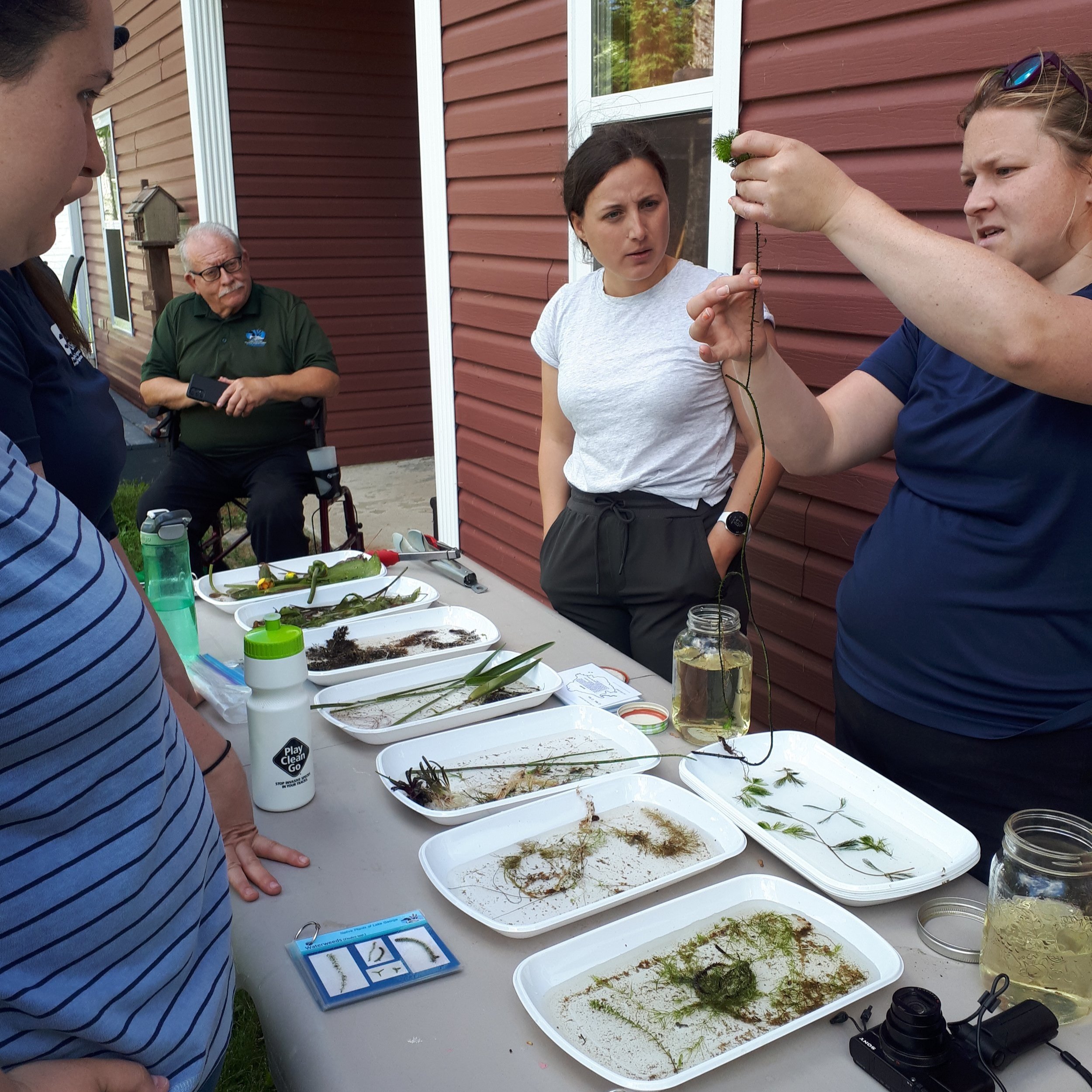A Day with NBISC: Invasive Plant Patrol Training
In June, we were invited by the New Brunswick Alliance of Lake Associations (NBALA) to become trained to deliver their Invasive Plant Patrol (IPP) program, which provides training and support to lake volunteers across New Brunswick to prevent the spread and introduction of invasive species to the province’s lakes.
Hal Mersereau, NBALA Vice Chairperson and IPP Program Coordinator, hosted our team at the cottage on his family’s property, which overlooks the shores of Lake George. We spent the morning gathered around the dining table to learn about the IPP program, details about the types of workshops that are offered, organizing field surveys, and New Brunswick’s “10 Most Wanted” invasive plants that are focused on during the workshops, including:
Glossy Buckthorn
Common Reed/Phragmites
Hydrilla
Eurasian Watermilfoil
Yellow Floating-heart (Nymphoides peltata)
Purple Loosestrife
After breaking for lunch, our plan for the afternoon was to kayak in a nearby cove to practice surveying for invasive plants and gathering plant samples which will be identified back on land. After unloading the kayaks from our vehicles; putting on our lifejackets; and equipping the kayaks with viewfinders to look under the water, sample bags, and the IPP Plant Species Identification Card booklet; we set off to survey the cove.
The sunny skies and slight breeze made for an enjoyable paddle, and we were treated with the sighting of a nesting female Loon and a Painted Turtle. After collecting plant species from the cove for 45 minutes, we made our way back to the shore to begin the third part of the training session, which was to identify the aquatic plant species that we collected.
Back at the cottage, we set up a table with some trays and began to lay out the plant species that we had found to begin the identification process. Between our personal knowledge, the information that we had learned during the morning presentation, and the identification cards created by NBALA and Eastern Charlotte Waterways, we were able to identify native Spatterdock, Common Bladderwort, Hornwort, and Waterweeds. We didn’t find any invasive plants, however we brought along a sample of Eurasian Watermilfoil for the other participants to see in person and to learn how to identify it in comparison to native Northern Watermilfoil.
Thank you to the New Brunswick Alliance of Lake Associations for hosting us for the training day!


